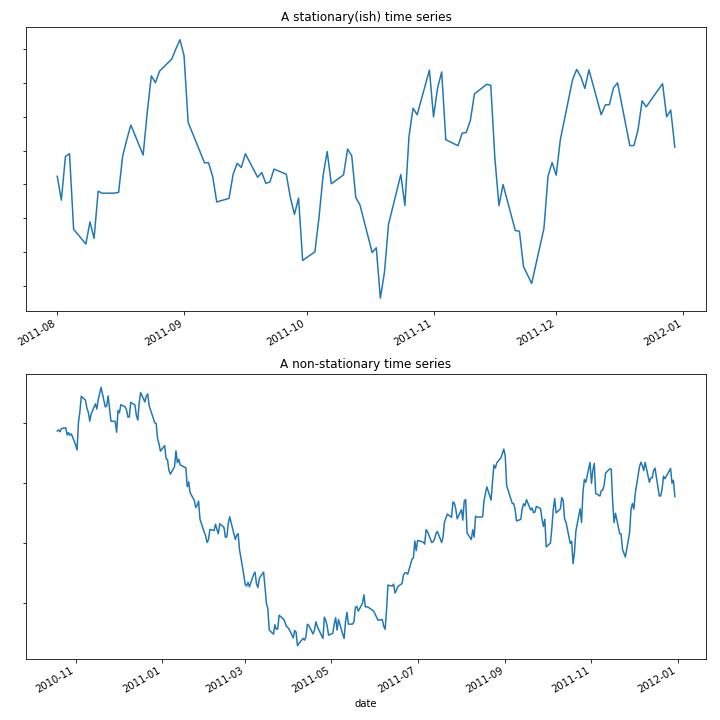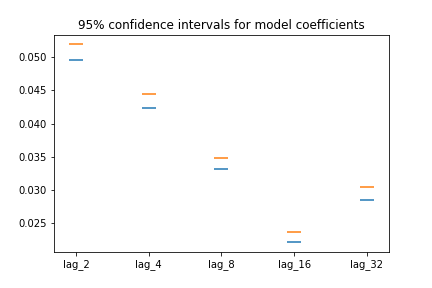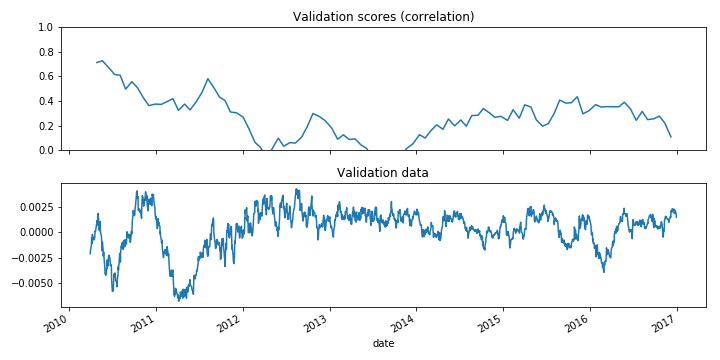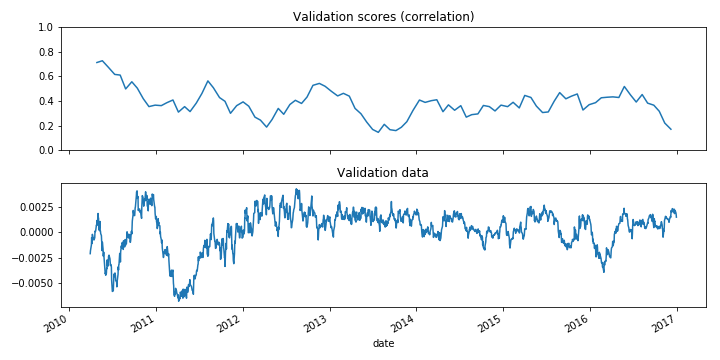Stationarity and stability
Machine Learning for Time Series Data in Python

Chris Holdgraf
Fellow, Berkeley Institute for Data Science
Stationarity
- Stationary time series do not change their statistical properties over time
- E.g., mean, standard deviation, trends
- Most time series are non-stationary to some extent

Model stability
- Non-stationary data results in variability in our model
- The statistical properties the model finds may change with the data
- In addition, we will be less certain about the correct values of model parameters
- How can we quantify this?
Cross validation to quantify parameter stability
- One approach: use cross-validation
- Calculate model parameters on each iteration
- Assess parameter stability across all CV splits
Bootstrapping the mean
- Bootstrapping is a common way to assess variability
- The bootstrap:
- Take a random sample of data with replacement
- Calculate the mean of the sample
- Repeat this process many times (1000s)
- Calculate the percentiles of the result (usually 2.5, 97.5)
The result is a 95% confidence interval of the mean of each coefficient.
Bootstrapping the mean
from sklearn.utils import resample
# cv_coefficients has shape (n_cv_folds, n_coefficients)
n_boots = 100
bootstrap_means = np.zeros(n_boots, n_coefficients)
for ii in range(n_boots):
# Generate random indices for our data with replacement,
# then take the sample mean
random_sample = resample(cv_coefficients)
bootstrap_means[ii] = random_sample.mean(axis=0)
# Compute the percentiles of choice for the bootstrapped means
percentiles = np.percentile(bootstrap_means, (2.5, 97.5), axis=0)
Plotting the bootstrapped coefficients
fig, ax = plt.subplots()
ax.scatter(many_shifts.columns, percentiles[0], marker='_', s=200)
ax.scatter(many_shifts.columns, percentiles[1], marker='_', s=200)

Assessing model performance stability
- If using the TimeSeriesSplit, can plot the model's score over time.
- This is useful in finding certain regions of time that hurt the score
- Also useful to find non-stationary signals
Model performance over time
def my_corrcoef(est, X, y):
"""Return the correlation coefficient
between model predictions and a validation set."""
return np.corrcoef(y, est.predict(X))[1, 0]
# Grab the date of the first index of each validation set
first_indices = [data.index[tt[0]] for tr, tt in cv.split(X, y)]
# Calculate the CV scores and convert to a Pandas Series
cv_scores = cross_val_score(model, X, y, cv=cv, scoring=my_corrcoef)
cv_scores = pd.Series(cv_scores, index=first_indices)
Visualizing model scores as a timeseries
fig, axs = plt.subplots(2, 1, figsize=(10, 5), sharex=True)
# Calculate a rolling mean of scores over time
cv_scores_mean = cv_scores.rolling(10, min_periods=1).mean()
cv_scores.plot(ax=axs[0])
axs[0].set(title='Validation scores (correlation)', ylim=[0, 1])
# Plot the raw data
data.plot(ax=axs[1])
axs[1].set(title='Validation data')
Visualizing model scores

Fixed windows with time series cross-validation
# Only keep the last 100 datapoints in the training data
window = 100
# Initialize the CV with this window size
cv = TimeSeriesSplit(n_splits=10, max_train_size=window)
Non-stationary signals

Let's practice!
Machine Learning for Time Series Data in Python

